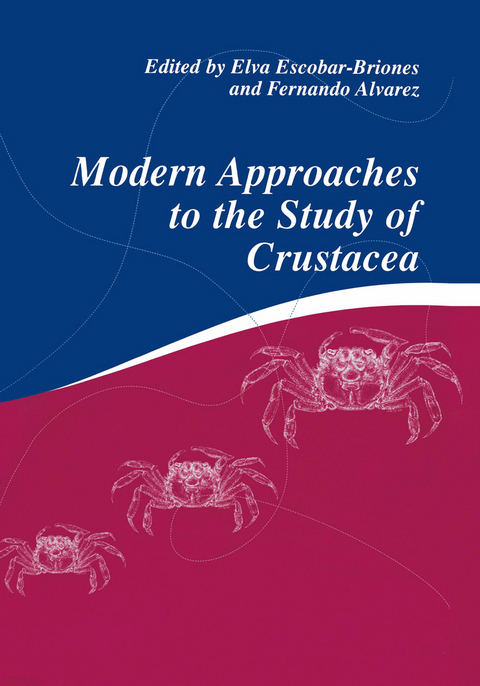
Modern Approaches to the Study of Crustacea
Seiten
2002
|
2002 ed.
Kluwer Academic/Plenum Publishers (Verlag)
978-0-306-47366-1 (ISBN)
Kluwer Academic/Plenum Publishers (Verlag)
978-0-306-47366-1 (ISBN)
Aimed at researchers and scientists, this volume reflects the international nature of the Crustacean Society. Composed of 46 chapters and written by 100 authors from 17 countries, it is organized in four sections: physiology, ecology, conservation and biodiversity, and systematics and evolution.
When [ teach my undergraduate course in these animals belong together, and we nowlearn that Crustacea at the University of Copenhagen [always they may even encompass the speciose insects. With or tell my students: " Now, if on reading through the without insects the Crustacea are therefore unquestion- chapter on Crustacea you wonder, what could pos- ably one of the most important animal groups. Is this sibly be said in common about these animals, you why we study them? I think not. Our fascination with havegot it exactly right! Indeed, there is next to noth- Crustacea is even deeper rooted and not easily ana- ing that unite them". Crustaceans range in size from lyzed. But one thing is important to me in this context. much below millimeter size to the giant king crabs; As Ibrowse through aU the papers in this book it brings in morphology from the almost stereotyped segment up the memoryofthe highlyrewarding Summer Meet- repetition ofthe Remipedia to animals with a highly The Crustacean Society held in 2000 in Puerto ing of diverse array of appendages such as the Decapoda; Vallarta, Mexico, where I had the privilege to serve as in life form from suspension feeding anostracans to its president.
When [ teach my undergraduate course in these animals belong together, and we nowlearn that Crustacea at the University of Copenhagen [always they may even encompass the speciose insects. With or tell my students: " Now, if on reading through the without insects the Crustacea are therefore unquestion- chapter on Crustacea you wonder, what could pos- ably one of the most important animal groups. Is this sibly be said in common about these animals, you why we study them? I think not. Our fascination with havegot it exactly right! Indeed, there is next to noth- Crustacea is even deeper rooted and not easily ana- ing that unite them". Crustaceans range in size from lyzed. But one thing is important to me in this context. much below millimeter size to the giant king crabs; As Ibrowse through aU the papers in this book it brings in morphology from the almost stereotyped segment up the memoryofthe highlyrewarding Summer Meet- repetition ofthe Remipedia to animals with a highly The Crustacean Society held in 2000 in Puerto ing of diverse array of appendages such as the Decapoda; Vallarta, Mexico, where I had the privilege to serve as in life form from suspension feeding anostracans to its president.
From the contents:
Physiology.- Conservation and Biodiversity.- Systematics and Evolution.- Index.
| Zusatzinfo | XXIV, 355 p. |
|---|---|
| Verlagsort | New York |
| Sprache | englisch |
| Maße | 178 x 254 mm |
| Themenwelt | Naturwissenschaften ► Biologie ► Limnologie / Meeresbiologie |
| Naturwissenschaften ► Biologie ► Ökologie / Naturschutz | |
| Naturwissenschaften ► Biologie ► Zoologie | |
| ISBN-10 | 0-306-47366-6 / 0306473666 |
| ISBN-13 | 978-0-306-47366-1 / 9780306473661 |
| Zustand | Neuware |
| Haben Sie eine Frage zum Produkt? |
Mehr entdecken
aus dem Bereich
aus dem Bereich
Naturerfahrungen zwischen Quelle, See und Wildfluss
Buch | Hardcover (2024)
Verlag Anton Pustet Salzburg
30,00 €
Buch | Softcover (2024)
Princeton University Press (Verlag)
43,65 €


